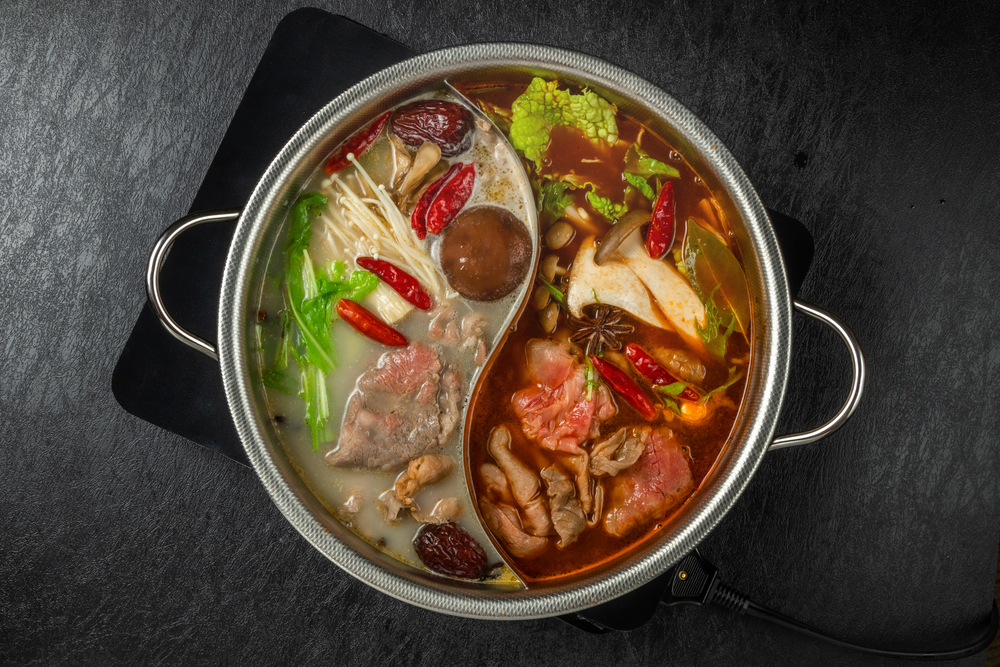
Eating for the Seasons
Diet is an essential component of maintaining good health. Everything that we eat contributes nutrients necessary to support our bodily functions. That means there’s lots of benefits to eating a well-balanced diet, and seeking out foods that are high in vitamins and minerals. According to the teachings of Traditional Chinese Medicine, our bodies follow the natural rhythms of the seasons. As our bodies are microcosms of the world around us, we can better harmonize with each season by eating the foods associated with them. Below, we’ve put together some of the basics of how to eat for each season of the year.
What is Traditional Chinese Medicine?
Traditional Chinese Medicine (TCM) is an ancient medical system that has evolved over thousands of years and is used to diagnose, treat, and prevent illness and disease. There are many branches of TCM, like acupuncture, tai chi, and herbal medicine. The foundational principle in TCM is that vital energy called Qi (pronounced “chee”) flows through our bodies. When Qi becomes imbalanced or stagnates, this causes us to become sick. Each branch of TCM employs techniques designed to restore balance and activate our bodies’ natural healing processes.
How does Traditional Chinese Medicine differ from western medicine?
The fundamental difference is in TCM’s holistic approach to medical treatment. Traditional Chinese Medicine treats all systems and organs in the body as being deeply interconnected. This interconnectedness is how modalities like acupuncture, which is non-invasive, treat conditions affecting deep tissue and internal organs. Further, TCM practitioners tailor their treatments to their patients’ individual needs, rather than rely on statistical models for how a condition should be treated. Put more simply, the goal is to restore you to good health rather than simply treat a collection of symptoms.
Why are the seasons important in Traditional Chinese Medicine
In Traditional Chinese Medicine, the body is viewed as a microcosm of the larger surround universe. Each season corresponds with one of the five natural elements – fire, earth, metal, water, and wood. These elements also exist within us. The abundance of a season’s element can cause imbalance that disrupts our health. To maintain good health, TCM councils that we pay close attention to the bodily system’s most influenced by each season’s element, to nourish our bodies with foods that promote balance, and to engage in activities that harmonize with that season’s energy.
The principle of the 5 elements
There are five elements in TCM: wood, fire, earth, metal, and water. All of nature can be organized into one of the five elements. Called Wu Hsing in Chinese, the five elements principle provides us with a blueprint to understand how nature interacts with and impacts our bodies. Every element has a season, direction, climate, stage of growth, internal organ, emotion, and aspect of the soul. To maintain harmony and balance, we need equal measures of each of the five elements.

What to eat in spring
Green is the colour of spring – and the colour of foods we should be eating. Eating vegetables and fruits packed with nutrients, will nourish the liver and improve its function. You want to focus on incorporating young, fresh leafy greens and sprouts into your diet. Focus on those vegetables that are in season in spring. Be mindful that the weather hasn’t fully warmed up yet, so avoid eating too many raw or cold foods, as this introduces cold into the body that is detrimental to your overall health.
What to eat in summer
Dehydration is a common challenge in summer as the heat has us sweating and losing water in our bodies. It’s important to drink lots of fluids. Although, you should avoid drinking too much ice water as this introduces excessive cold into your small intestine, which causes imbalance.
Eating foods with high water content will help keep you hydrated, as well as make you more resilient to the heat. Consider adding foods like watermelon, cucumber, cantaloupe, sprouts, bok choy, and oranges to your diet. Adding mint and lemon to your water or green tea will also help keep you cool during the summer months.
What to eat in late summer
Now is the time to think about eating more soups and stews. The hot weather is fading and that means we should reduce the amount of cooling foods we’ve been eating. It’s especially important to cut out ice water and frozen treats. Foods you should start eating more of include sweet potato, kale, carrots, squash, rice, and other whole grains.
What to eat in autumn
What you eat is an important component of maintaining optimal health and wellness. During autumn, we want to be eating lots of warming foods like soups and stews, as well as pungent foods like chilies, hot peppers, ginger, garlic, and onions.
Eating fibrous foods is always beneficial to gut health. As the large intestine is one of the organs in focus this season, it’s a good idea to incorporate foods like sweet potato, kale, beets, chickpeas, pear, and apple into your diet. Other foods like broccoli, carrot, pumpkin, and winter squash are also recommended.
What to eat in winter
This is the time of year to eat lots of hearty, warming foods that are packed with nutrients and energy. Soups and stews, root vegetables, beans, whole grains, ginger, and garlic are all staple foods of winter. Other things to add to your diet in winter are black sesame seeds, black berries, sea salt, kidney beans, blue berries, kelp, chia seeds, black beans, and seaweed. Avoid eating raw foods as they tend to cool the body. Drinking ginger or cinnamon tea can also help keep you warm, as well as support your immune system.



